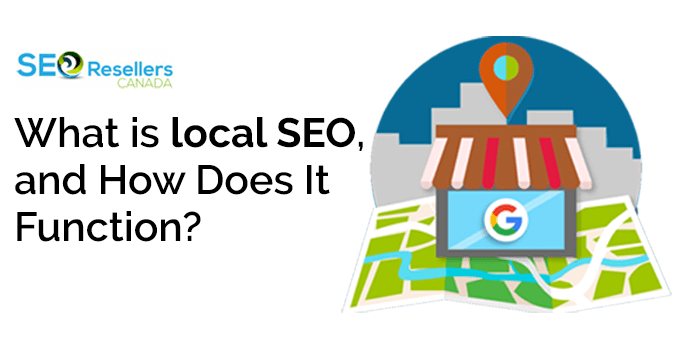There’s plenty of confusion regarding the use of meta descriptions and its supposed effect on SEO, but do they affect search engine rankings in any way? Is it worth your time to write a good meta description for your web pages? These questions and many more will be answered in this piece as we explain the worth of meta descriptions and their impact on search engine optimization.
Google released an official statement in 2009 regarding meta descriptions and claimed that they don’t have any impact on their search engine ranking parameters. However, meta descriptions show up in search engine results and, therefore, have a bearing on click-through rates (CTRs), which are linked to search engine optimization and rankings. This has led many to believe that meta description tags do, in fact, have an effect on SEO.
The infuriating thing about meta description tags and their impact on SEO is that the more you read about it, the more confusing it ends up getting. It’s a complicated subject, and to better understand the topic, we’ve decided to clear the air in this article. We will explain everything there is to know about the importance of meta description tags and how they can affect search engine rankings.
1- What Is the Meta Description Tag?

Let’s kick things off by clearing what a meta description is for everyone. HTML can only run with tags, and a tag is a set of characters that give a command. In web design and development, these tags are used to inform the browser how certain elements on the web page should be structured.
The <Meta> description tag contains details about the web page and gives a brief summary of the page’s subject matter. It informs users of what the web page is going to be about before they decide to click on it.
Google has search engine crawlers that index web pages and meta descriptions help crawlers understand what the page is about. It helps them rank the page on search results so that users get the most relatable content online. Here’s what a meta description looks like:
In essence, the meta description is important for indexing your web page on search engines, but it has no bearing on search engine rankings. The optimal length for a meta description on Google should be anywhere between 155 and 160 characters.
It’s best to keep meta descriptions lengthy so that they’re descriptive and give readers a sufficient idea of what to expect before they click on the link. Your goal when writing a meta description should be to drive clicks and provide value to the reader.
Meta description tags are an opportunity to ‘advertise’ your content to readers and increases their chances of finding content that is relevant to them. The meta description of a web page should have intelligent keyword optimization so that the description is compelling enough for the reader to take action and click on it. You must make it unique for all other pages on your website.
2- How Do Search Engines Use Meta Descriptions?

In the earlier days of SEO, meta descriptions used to be vital parts of the optimization process and were considered an important ranking factor. However, Google claims that they don’t help to rank and doesn’t recognize meta description tags as an important ranking signal.
The best examples of meta description tags and how they are used by search engines can be ascertained by looking at Google’s own meta description for starters:
Google’s meta descriptions are exactly 159 characters long, including spaces. They are displayed in the following manner on the top three search engines:
In Google –

In Yahoo –

In Bing –

It’s ironic that Google doesn’t list themselves in the search results, and you must search for Google to see their meta description tag. They are also the only ones that have cut off their description, and even though they admit to not using the meta description for their ranking algorithm, they support meta descriptions and include them as snippets in search results.
The next question on your mind would be whether the top SEO blogs use meta descriptions, and the answer to that is ‘Yes’ and ‘No’:
- SEOmoz only uses meta description tags on their Homepage and product pages, but not on their blog posts.
- Search Engine Journal uses a short meta description on their Homepage but not on their posts
- SEOBook doesn’t use a meta description tag on their Homepage or blog posts but has used it on some internal pages.
- Search Engine Watch uses a lengthy meta description tag on their Homepage but not on their posts.
- Search Engine Land uses a lengthy meta description tag on their Homepage and have used it on some of their posts.
While most people would have you believe that meta description tags don’t play any role in search engine rankings, it still makes a difference in terms of improving Click-Through Rates for your website.
3- How Do I Use Meta Descriptions for SEO?
Meta description tags don’t directly impact a web page’s ranking in search results, but they still have a significant effect on SEO. Google relies on these descriptions to determine the relevancy of the page in response to a query. However, the biggest role that the meta description tag plays is in encouraging click-through and dwell time for users.
3.1- Use Meta Descriptions to Improve Your CTR
As meta description tags are generally incorporated in the search snippet, it’s going to be the first interaction any person will have with your web page. This provides you with a great opportunity to encourage them to click the link and be directed to your website.
Your search snippet acts like a digital billboard for your website as they entice users to click through to your website, and if user experience matches the expectations set in the description, it helps keep them on your website. There are several best practices for writing engaging meta descriptions, but the general guidelines involved include the following:
3.1.1- Use Actionable Language
Use content intelligently to encourage users to click on the link. This doesn’t mean adding a ‘click here now’ CTA in your description, but instead, describe the goal the users will achieve. A good example would be something like ‘learn what meta descriptions are, why they matter, and how to use them’ or ‘find out how to buy the best windproof umbrella here.’
3.1.2- Communicate Your Value
Think of it like writing copy for an organic search text advertisement. Use descriptive, engaging copy so that users have no choice but to click on the link. For non-commercial queries, you should answer the question in the description so that it appears in the SERP.
3.1.3- Use Good Keywords
Google will make keywords that match the words from the user’s query bold in meta descriptions. Using these keywords in your meta descriptions reinforces to the users that your content has all the information they’re searching for and will draw more attention to your snippet.
3.2- Use Accurate Meta Descriptions to Prevent High Bounce Rate
A well-written and engaging meta description will inform a person on what a page is about and what they’ll get on it before they click. Improving the CTR of your page will make a big difference, but it can backfire in a big way if that new traffic thinks they are clicking on the page for something else.
So, even though your meta description needs to be compelling and actionable, it’s vital that it is accurate. If you’re not offering special discounts or free shipping, or if the content doesn’t answer their question, don’t make wild promises and claims in your descriptions. Lying to your users doesn’t do you any favours because they will not only leave your page immediately but won’t trust you again as well.
Plus, if Google thinks that your meta description tag doesn’t accurately represent the content or isn’t relevant to the query, it is going to replace your description with another description in the snippet. That’s why you must focus on creating accurate descriptions as it increases your chances of being chosen by Google for descriptions, which it would use instead of its own.
4- Meta Descriptions vs. SERP Snippets
A lot of people make the mistake of using the terms ‘search snippet’ and ‘meta description’ interchangeably. It ends up creating confusion because, in reality, meta descriptions and search snippets are two separate things.
4.1- Meta Description:
The Meta Description is an HTML tag that you have control over, and you can create and optimize your meta descriptions.
4.2- Search Snippets:
The Search Snippets are the descriptions Google shows to users for your webpages. It could be the meta description you’ve created, or it could be a passage from the website’s copy that Google thinks is more relevant to the query and the user. You have no control over this, as Google decides what to show.
Why would Google decide not to use your meta description?
This depends on the search query, and Google will generate a description for your webpage that is completely different from your meta description. It’s not new and is an automated process Google has been using for years.
The distinction between search snippets and meta descriptions is an important one, especially when Google makes new announcements, like when Google expanded the length of these snippets, but then shortened the snippets again after six months.
5- What’s the Recommended Length for a Meta Description?
The standard SEO best practice for several years has been to keep meta descriptions at around 160 characters maximum. The reasoning behind this was that optimization helps avoids truncating the meta description in the SERPs and, thus, helps avoid high bounce rates. Last year, Google announced a change to the SERP snippets and took them up to 300 characters, which is double the usual recommended 150-160-character limits.
An in-depth study by Moz found that writing 300 character long meta descriptions should be considered the new limit. However, Google quickly reversed this and went back to the standard word count character limit that had been set originally. What this means for SEO is that you should continue experimenting and assessing results and make changes based on your findings.
You should listen to what Google and their spokespersons say about what should and shouldn’t be implemented, but you should also conduct your own testing. This means testing what they say and testing what they don’t say to find out what works best for your website.
6- Reasons Why You Should Use Meta Description Tags
Most people still tend to ask themselves, ‘if meta descriptions don’t count in ranking algorithms, why should I use them?’ The answer to that is a simple one. Stop thinking about meta description tags as a ranking factor, and start thinking about them as a conversion factor.
Here are some great reasons to keep your meta description in mind on your website, including your Homepage, internal pages, blog posts, and so on.
6.1- Bolded Keywords in Search Results
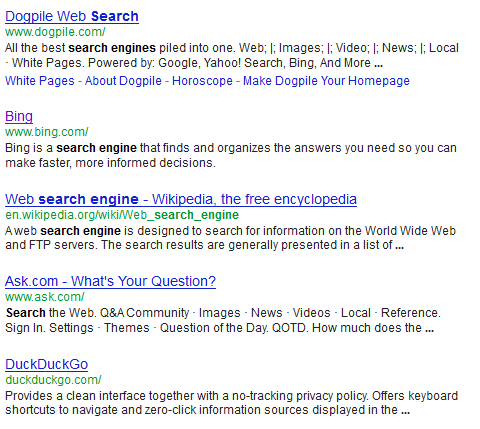
Even if the keyword you’ve used in the meta description doesn’t help you in search rankings, it may still help in getting the attention of users. When someone searches for a keyword or phrase, it will appear bolded in search results wherever it appears.
So, if you’re targeting that keyword, you will want to stand out. In this set of results for the query ‘search engine,’ which of the results jump out to you?
It goes to show why your top keyword phrase should be in your SEO title and meta description. You don’t want to be the one result in this list that doesn’t have any bolded keywords for that search. So, ensure that your meta description uses the keywords you are targeting and is written in a manner that encourages searchers to click on that result.
6.2- Top Social Networks Use It
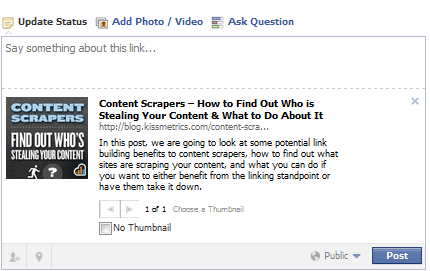
Whenever you share a page on social networks, such as Google+, LinkedIn, or Facebook, every website will either pull the meta description or the first sentence or two of the post as the description to showcase in the share.
The meta description is generally shown in its entirety, and the first sentence or two of your posts will be cut off. Even though you can still edit the description for LinkedIn or Facebook, not everyone sharing your page is going to do the same.
Google+, on the other hand, will only allow you to remove the description. That means if your first sentence or two on the page doesn’t sum it up well, other people who may see the share may end up missing the point.
So, if you want your page’s shares to get the most clicks on social media, you should consider creating a strong meta description that encourages clicks.
6.3- Social Bookmarking Networks Use It
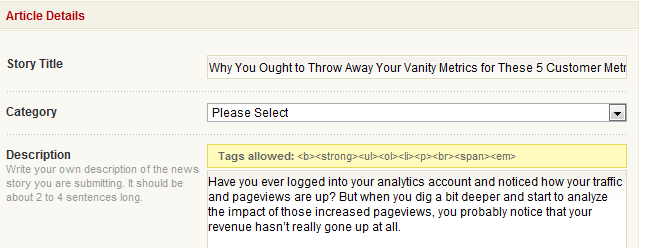
Most social bookmarking networks also use the meta description as the page’s description on their network.
Almost every social bookmarking/voting network built on the Pligg CMS system will be using the meta description first. You may edit the descriptions on any of these networks, but you can’t count on whether others who have submitted your page will do the same.
Plus, when you don’t need to edit your descriptions, you save work for yourself when you’re submitting your own pages.
7- Tips for Improving Your Meta Descriptions
One of the most neglected values of meta descriptions is that you can craft your own unique Call-to-Action in the description. Here are some important tips you can use when writing your meta descriptions:
7.1- Write Engaging Call-to-Actions!
You should add actionable language in the meta description with phrases such as ‘click here,’ ‘learn more by clicking here,’ and ‘click on this result.’ The context of the webpage is going to determine what wording you choose, such as ‘download here’ and ‘view video.’
7.2- Choose Powerful Language
The manner in which you phrase your meta descriptions will make or break your search engine results. Adding words that describe the value in your description gives searchers a great reason to click on your link.
7.3- Test You Descriptions
If you’ve got different landing pages on your website that get a good amount of organic traffic, you should think about testing different variations of meta descriptions to find out if you can increase your click-throughs. Try using different description lengths, changing the phrasing, and positioning of the keywords to see if they offer better results.
7.4- Writing Compelling Copy

The meta description tag serves as an advertising copy for your web page as it draws readers to a website from the SERP and is a visible and important part of search marketing. Crafting a compelling and engaging description with keyword optimization can improve the click-through rate of any webpage.
To maximize the click-through rates on search engine result pages, you should know that Google and other search engines bold keywords in the description when they match search queries. This bold text will catch the eye of searchers, so you should match your descriptions to search terms as closely as possible.
7.5- Avoid Duplicate Meta Description Tags

It’s imperative that your meta descriptions for every page are unique, or else you’ll end up with SERP results that look like this:
The best way to combat duplicate meta descriptions is to implement a dynamic and programmatic way to create unique meta descriptions for automated pages. There’s no substitute for an original description that you’ve written for every page.
7.6- Don’t Include Double Quotation Marks
Any time quotation marks are used in the HTML of a meta description, Google cuts off that description at the quotation mark when it appears on a SERP. Your best move for preventing this happening would be to remove all non-alphanumeric characters from the meta descriptions.
If quotation marks are important for your meta description, you should use the HTML entity instead of double quotes to prevent truncation.
7.7- Sometimes It’s Best Not to Write Meta Descriptions
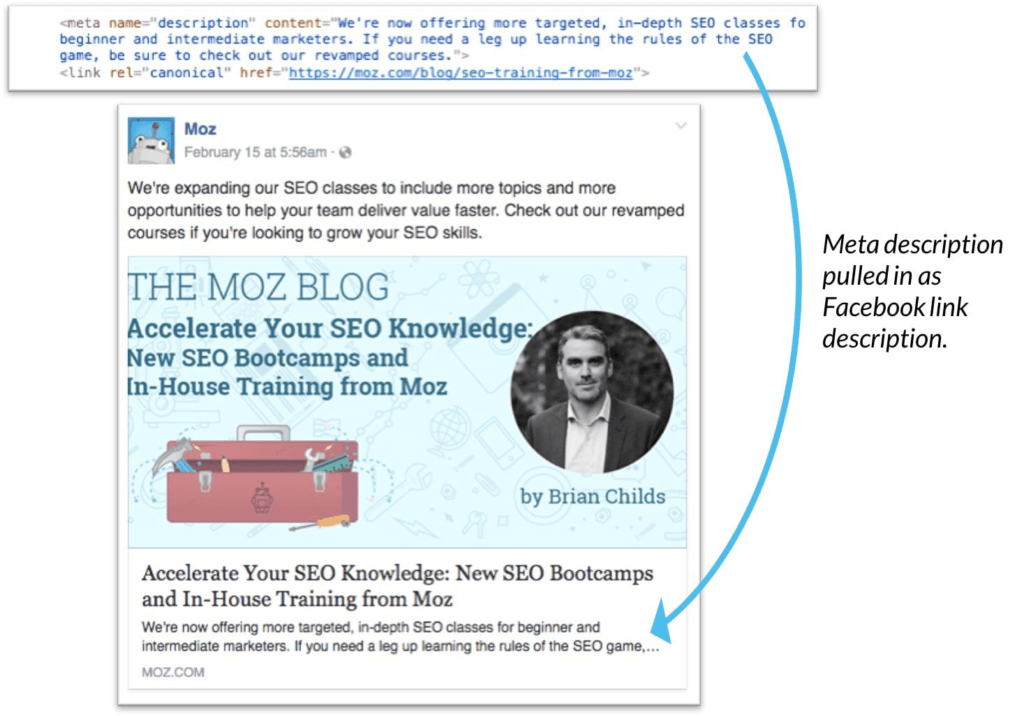
Even though conventional logic would suggest that it’s better to write a good meta description instead of letting search engines scrape a web page, that’s not always the case. You can use this general rule of thumb to find out if you should write your own meta description:
- If a page is targeting between 1 and 3 heavily searched terms or phrases, you can write your own meta description to target users who are performing search queries that include those terms.
- If the page is targeting long-tail traffic, it’s best to allow the search engine to populate a meta description on its own.
There’s a simple reason for that because when search engines pull together a meta description, they will always display the keywords and phrases that the user has searched for. The meta description written by a webmaster into the code of the page can detract from the relevance the search engines have made naturally, depending on the query.
The only problem you may face by omitting your meta description tags is that social media platforms, such as Facebook, generally use the meta description tag of a page as the description that will appear when the page is shared on their platform.
Without the meta description tag, social media platforms will start using the first text they find. Depending on the first text on your page, it may not offer a good user experience for people who come across your content through social sharing.
8- How to Write Great Meta Description Tags?
Irrespective of what industry you belong to, when writing meta description tags for your web pages, you must always perform research first. Find out what your competitors are doing and monitor their SERPs over the next days, weeks, and months. You’ll manage to assess what their meta descriptions are sticking with and which ones aren’t. To conduct SERP research effectively, you must follow the steps:
8.1- Research SERPs for your Targeted Keyword
This is easier said than done and can be a time-consuming process as you must go through search results and identify what is exactly your competition’s kryptonite. The reason why we are looking at the competition is that generally, the competition implements techniques that are working.
8.2- Make a Spreadsheet and Track Them
You can export Google SERPs to an Excel spreadsheet quickly by using the SEO Quake Google Chrome extension. This will allow you to keep a running tally of your competition and track them easily and efficiently on a monthly basis while saving monthly costs.
8.3- Research Your Clients
Identify the optimal buying journey of your target audience and what is happening at every stage of the marketing funnel. This can vary depending on your target market, so sharing an exact funnel to follow would be pointless. You should tailor and target your meta descriptions based on your findings.
8.4- Set a Voice Tone that is Consistent with Your Brand
Each brand has a unique tone of voice that is consistent with their brand identify, which is how the brand appears to users online. Every meta description should be uniquely tailored and crafted based on how the tone of voice amplifies across the ecosystem of the brand.
You wouldn’t use a tone of voice for a website that sells shoes with one that sells hardware. The main benefit of the tone of voice is that it reaches out to different personas who may be targeting different keywords.
By targeting personas with user intent and combining keywords with this research, it’s possible to reach out to your target audience with a level of optimization and sophistication that they’ve never witnessed before. The key here is to ensure that this optimization doesn’t ruin the tone of voice and resonates with the target audience of your website.
8.5- Keyword Optimization
Google maintains that they don’t value keywords in the meta description tags for ranking purposes, but when you perform SERP research, you’re bound to notice highlighted keywords in the meta description. That’s not conclusive evidence of Google using it, but it’s something that helps draw your readers towards the most relevant results that satisfy their query.
Users on search engines go for results that come close to answering their queries. So, if their query is related to personal injury lawyers, they will choose to click on meta descriptions that are related to their query. It all depends on whether the result satisfies their intent and what exactly they are searching for.
So, if your meta description satisfies their intent better than other results, you’ve won the battle to grab their attention enough to get them to click on your web page. Part of that battle is on adding keywords that Google is most likely to highlight when results for your search query are displayed.
8.6- Use Trending Social Headlines in Your Meta Description
You must already know what is going on in your industry in terms of what is trending and what isn’t attracting target audiences in your industry. One thing that should be a part of your social media strategy is tracking influencer accounts and industry firms.
You can take it a step further to assess what’s currently trending in terms of topics and then base the phrasing of your meta description to nail down what is best for your brand. Don’t be complacent. When you’re writing meta descriptions for your web pages, it can be easy to stick to the basics, but you shouldn’t be afraid to stand out.
8.7- Make the Description Specific
Generalized meta descriptions and hollow phrases like ‘best widgets’ and other sales talk is something that usually turns off prospecting customers. You must inspire confidence, which results in something that is going to satisfy the intent of users for their queries.
You want your meta description tags to speak about what your readers are after and not try to push them into the sales funnel.
9- Conclusion
To sum up, meta descriptions have an indirect SEO impact through click-through rates despite Google stating to the contrary. That’s important when you’re fighting to get the top rank on SERPs.
Things such as technical SEO and backlinks tend to matter less there, and Google has more room for CTR since the top 3 results tend to get about 80% of the clicks. Make sure that you take advantage of the meta description tag and write your descriptions in a creative and clever manner to convince users to click on your links.


















